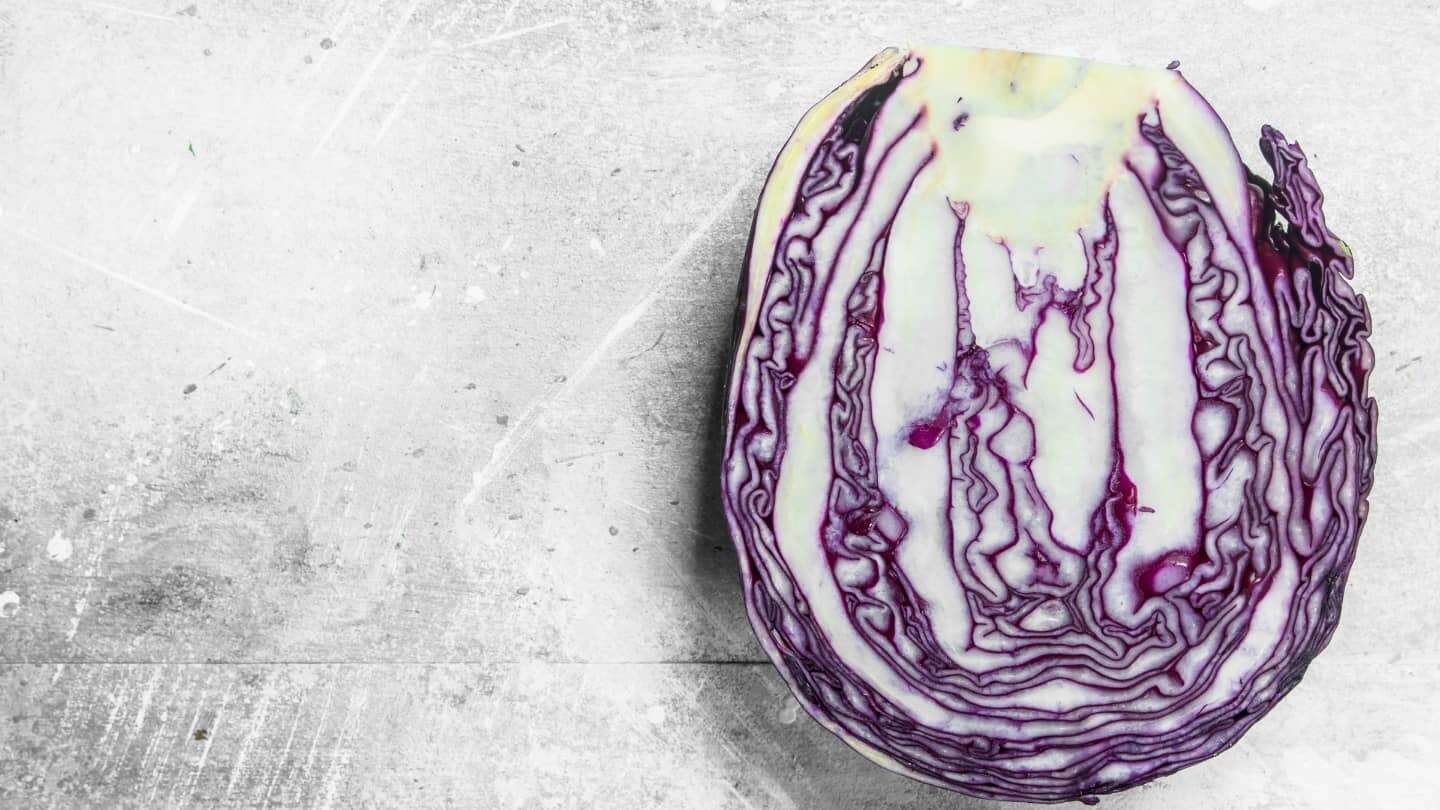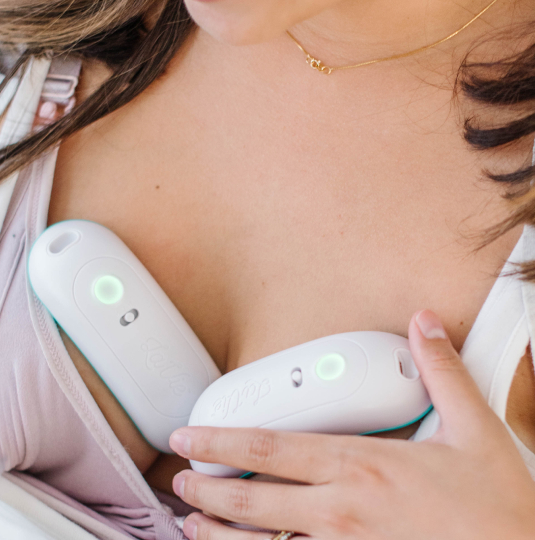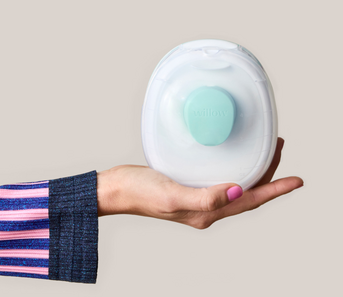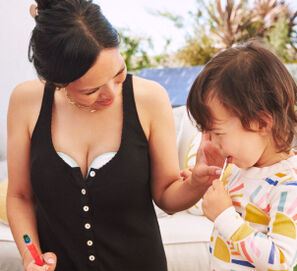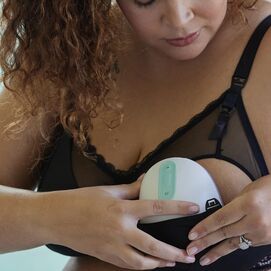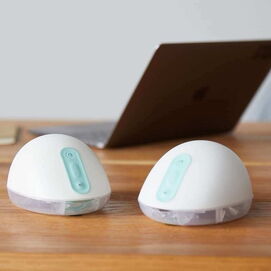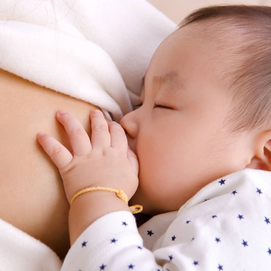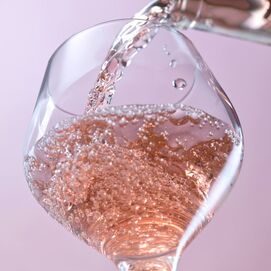Are you suffering from mastitis? It can be painful and scary, but you’re not alone! Mastitis occurs in 10% of women who breastfeed, and is most common during the first 6 months of breastfeeding. The good news is that you can safely breastfeed with mastitis, and there are a number of steps you can take to ensure a speedy recovery. Keep reading to learn everything you need to know about mastitis breastfeeding
What is mastitis?
Mastitis is an inflammation of the breast tissue that is often a result of infection. Symptoms include breast tenderness, swelling, fevers, red skin, and pain while breastfeeding. Mastitis typically appears in one breast, and the first symptoms arise in the form of red and warm skin.
Types of mastitis
There are two types of mastitis: lactation and periductal. Lactation mastitis is the most common, and affects women during breastfeeding.
Periductal mastitis is more common in those who are menopausal or postmenopausal, smokers, obese, and diabetic. In other words, periductal mastitis affects non-lactating women, and causes milk ducts to thicken.
Plugged duct vs mastitis - What are the differences?
Plugged milk ducts can have similar symptoms to mastitis, but there are some key differences that set them apart. Plugged ducts are often small lumps on the breast with some pain and swelling around the area of the lump.
If a plugged duct is not treated quickly, it can turn into an infection leading to mastitis. Fevers and flu-like symptoms are only signs of mastitis and not plugged ducts. If you think you have a plugged duct, seek treatment immediately so that it doesn’t worsen over time.
How long does mastitis last?
If the engorgement and tenderness does not wear off after 8-12 hours, visit a doctor immediately. Doctors will prescribe antibiotics for mastitis cases. If you run the full 10 day course of antibiotics, you will start to have relief and minimize your chance of getting mastitis again.
What causes mastitis?
Mastitis is commonly caused by bacteria entering the breast which causes an infection, or an untreated plugged milk duct. There are a variety of risk factors for this occurring. For example, small, unseen fissures on the nipple can be a route for infection if not properly treated.
Poor breastfeeding technique is also a possible risk factor for lactation mastitis. Weaning or missed feedings fall under the category of potential negative effects on milk duct health. Stress and sleep deprivation are also known risk factors, and many moms associate their mastitis with breast trauma, fatigue, and stress.
Can I breastfeed if I have mastitis?
Yes, you can absolutely nurse your baby if you have mastitis. Nursing can actually help clear out the infection more quickly. Nursing with mastitis will not harm your baby in any way, and your breast milk is safe for your baby.
How to breastfeed with mastitis
While undergoing treatment for mastitis, it’s still important that you continue nursing, both for you and your baby’s health. Below are steps you can take to ensure the process goes smoothly!
Before feeding
- Use heat with a warm compress to gently create supple skin
- Loosen clothing and bra
- Massage the breast area to release tension
During feeding
- Nurse on the affected breast first
- Use whatever positioning is most comfortable and helps the area to be massaged
- Try dangle feeding
- Massage and nurse simultaneously
After feeding
- Pump or express to aid drainage and speed healing
- Use cold compresses between feedings for pain and to reduce swelling
General advice
- Nurse frequently if possible
- Express frequently
- Treat plugged ducts ASAP
LaVie Warming Lactation Massager
LaVie Warming Lactation Massager
With LaVie, you'll say hello to improved milk flow, quicker pumping sessions, more effective emptying during pumping and nursing, and clogged duct prevention.
What increases your risk of getting mastitis?
While mastitis is not unusual in new moms, you are more at risk if you:
-
Leave a clogged duct untreated: If not treated immediately, clogged ducts can become infected and turn into mastitis.
-
Had a previous case of mastitis: It is possible to get mastitis more than once. Recurring mastitis may be the result of a nursing issue, contact a lactation consultant for advice.
-
Miss breastfeeding or pumping sessions: If you’ve missed a feeding or pumping session, this may give more time for bacteria to cause infection within your milk ducts. Feeding and pumping frequently helps to open the ducts and push out any impurities.
-
Cracked or sore nipples: Cracked nipples have small lesions that are more susceptible to bacteria. Apply vaseline and lotion to the affected area, and use a pump if breastfeeding becomes too painful.
-
Smoke tobacco: Cigarette smoking directly affects your vulnerability for mastitis. If you’ve been trying to quit, now is your reason!
-
Poor nursing positions: Only nursing in one position, or not using an effective position can affect your milk supply and cause your ducts to close.
How is mastitis diagnosed and treated?
Mastitis is often diagnosed by the most prevalent symptoms. Your doctor will perform a physical exam, and in more severe cases, they may perform a breast milk test. Mastitis is most commonly treated through a round of antibiotics, however taking over the counter pain relievers can also help to reduce inflammation
Mastitis is pesky and painful, but if you treat it ASAP you’ll be feeling better in no time. Remember that mastitis breastfeeding is completely possible, and you are not alone! Looking for a support community? Visit Willow to learn more about how we can help with your nursing journey.
Get pumping support with Simplifed
Get pumping support with Simplifed
Get access to free virtual feeding support from the lactation consultants at Simplifed. They can help you navigate supply issues, introduce a bottle, and more, and are trained on Willow pumps.

